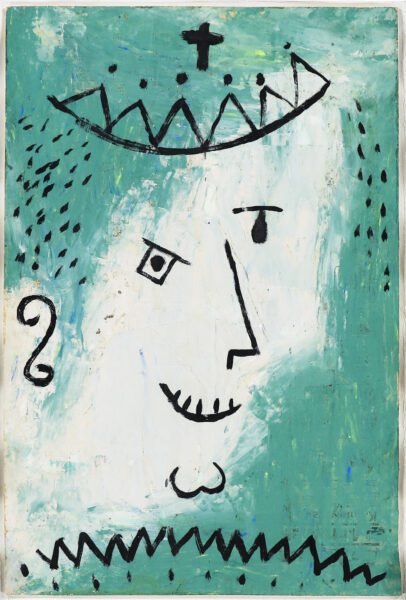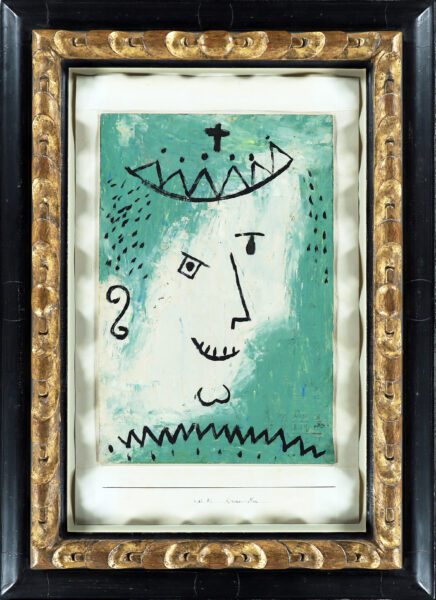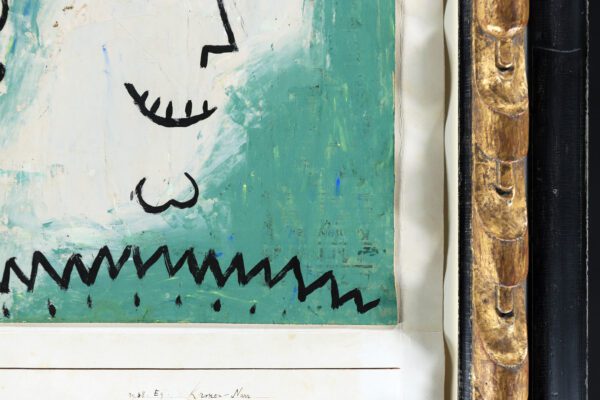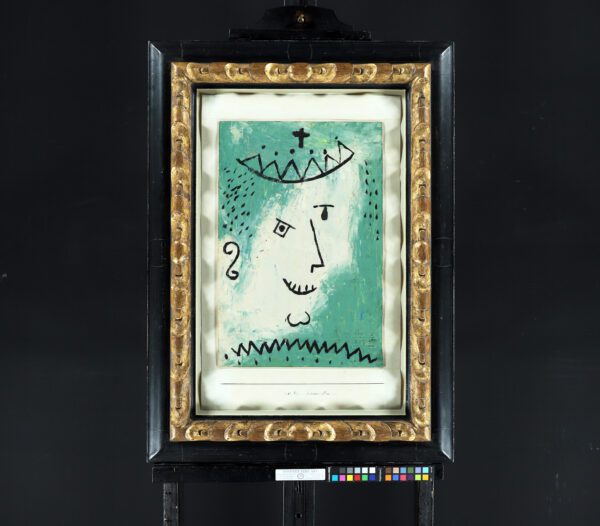‘Kronen-Narr’ (Crown Fool), 1938
Signed ‘Klee’ bottom right; also titled and dated ‘1938’ on the paper backing bottom center
gouache, brush and ink on newsprint laid down to board
Sheet size: 48,9 x 32,4 cm
"*" indicates required fields
Notes
Paul Klee was born near Bern in 1879 and is one of the most important artists of the 20th century. He followed the artistic trends of his time with great interest, but developed an independent position and never joined any particular art movement. His thinking and work influenced and inspired subsequent generations worldwide. Paul Klee died in Locarno in 1940 after a long illness. He is buried in Bern.
Klee was fundamentally a transcendentalist who believed that the material world was only one among many realities open to human awareness. His use of design, pattern, color, and miniature sign systems all speak to his efforts to employ art as a window onto that philosophical principle.
Klee was a musician for most of his life, often practicing the violin as a warm-up for painting. He naturally saw analogies between music and visual art, such as in the transient nature of musical performance and the time-based processes of painting, or in the expressive power of color as being akin to that of musical sonority. In his lectures at the Bauhaus, Klee even compared the visual rhythm in drawings to the structural, percussive rhythms of a musical composition by the master of counterpoint, Johann Sebastian Bach.
Klee challenged traditional boundaries separating writing and visual art by exploring a new expressive, and largely abstract or poetic language of pictorial symbols and signs. Arrows, letters, musical notation, ancient hieroglyphs, or a few black lines standing in for a person or object frequently appear in his work, while rarely demanding a specific reading.
Klee greatly admired the art of children, who seemed to create free of models or previous examples. In his own work he often strove to achieve a similar untutored simplicity, often by employing intense colors inspired by an early trip to North Africa, and by line drawing in the unstudied manner of an everyday craftsman. This is also evident in the current work from 1938. Many royal courts throughout history employed entertainers and most had professional fools, sometimes called “The Crown’s fools”.
Provenance:
- Hans and Erika Meyer-Bentelli, Bern until 1955.
- Berggruen & Cie, Paris, 1955-58.
- Saidenberg Gallery, Inc., New York, 1958-59.
- James Wise, Geneva, New York and Nice from 1959.
- Nahum Goldman, Jerusalem until 1983.
- The Collection of Sidney Rothberg, Philadelphia, Pennsylvania.
- Hindman, Philadelphia
- Private collection, The Netherlands
Literature:
Paul Klee-Stiftung, Kunstmuseum Bern, Paul Klee: Catalogue Raisonné, Band 7, 1934-1938, Thames and Hudson, London, 1998-2004, p. 344, n° 7250 (ill.)
Exhibitions:
1957, Amsterdam, Stedelijk Museum, Paul Klee;
1957, Brussels, Palais des Beaux-Arts.







